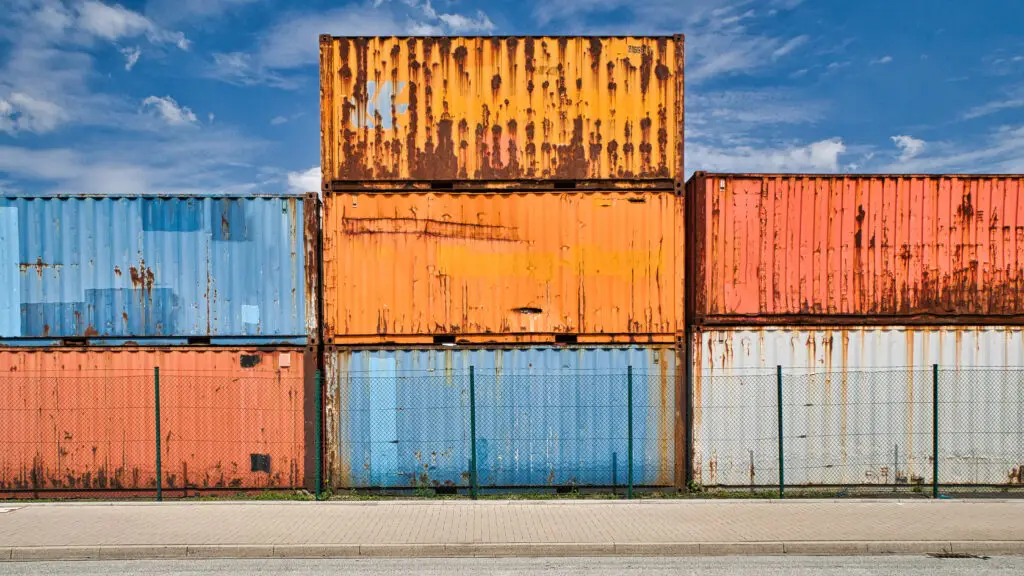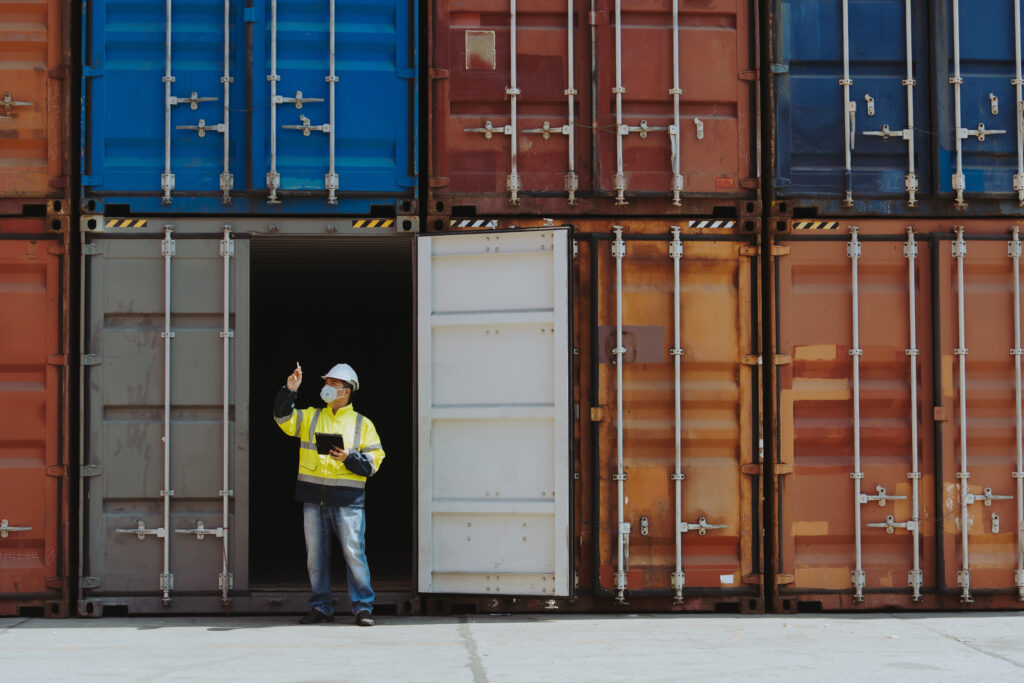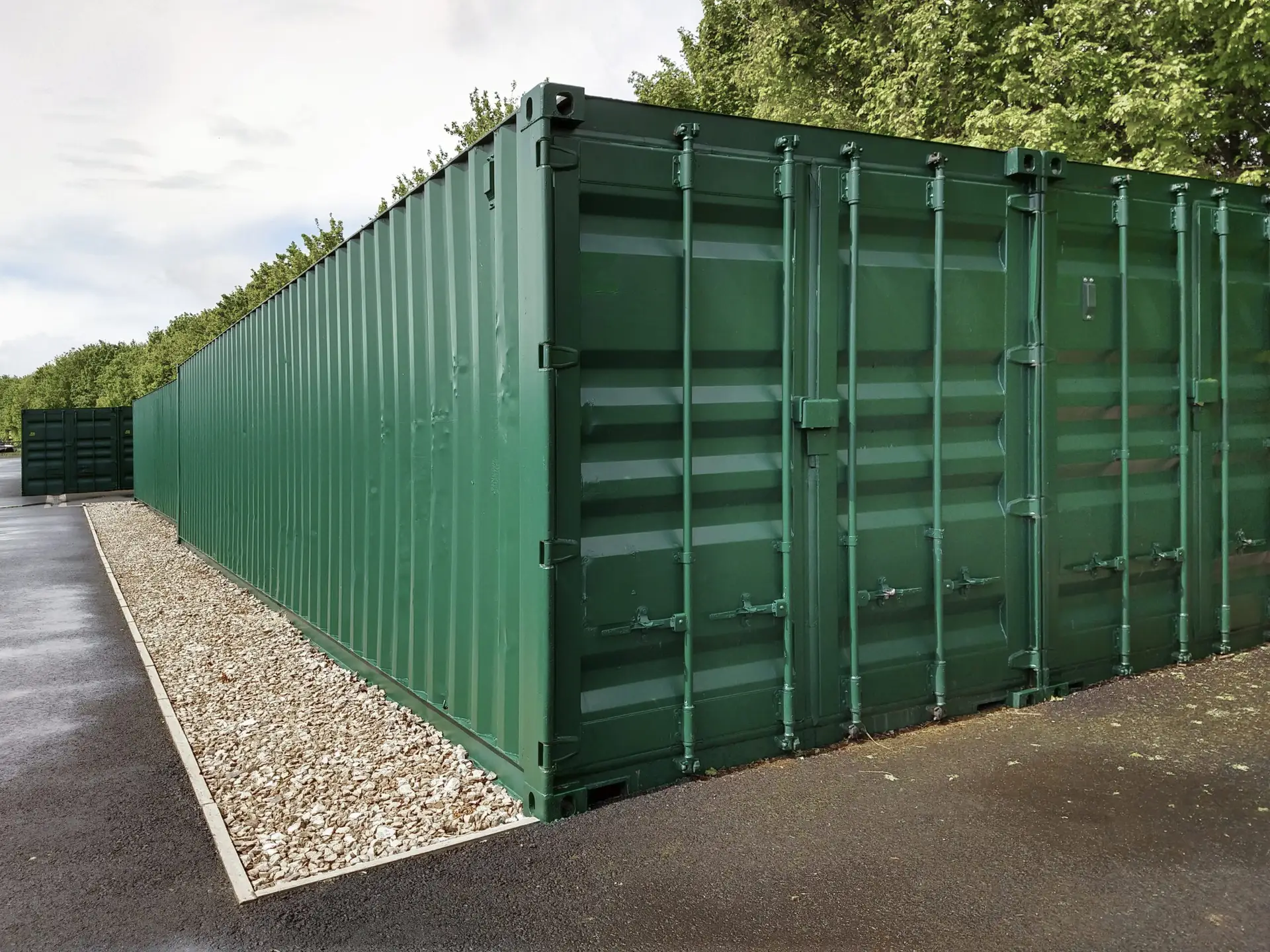“A well-maintained shipping container will outlive many sheds – invest a little care now and you’ll reap years of trouble-free use.”
Shipping Container Maintenance: Have you ever wondered exactly how long your shipping container will last, and what you must do to make it last even longer? If you’re using a container for storage, site accommodation, or even as a conversion, treating it like the investment it is will pay dividends. While shipping containers are built tough, they’re not invincible — and the difference between a container lasting a decade or three often comes down to how well it’s looked after.
In the UK, where weather can be damp and changeable, the right maintenance routine is especially important. Data shows that a properly maintained container (especially a “one-trip” or new build) might last 25-30 years or more, while older, heavily used units may only manage 10-15 years unless cared for.
For your clients who buy, rent or convert containers, this is a golden opportunity. By providing a clear, structured maintenance plan, you not only help them preserve value but also bolster your reputation (and your lead generation) as the go-to expert for container solutions. So here we go: let’s dig into exactly what to check, clean, maintain and monitor to give your shipping container the best possible shot at a long life.
2. Why Maintenance Matters: The Foundations
2.1 Understanding Lifespan
The material your container is built from (typically Corten or weathering steel) is designed for durability. One manufacturer says “new (one-trip) shipping containers … have an average lifespan of approximately 40 years with regular maintenance.”Another notes “with correct care and maintenance you could still get another 10/15 years use from a used container.”
The message is clear: the better the care, the longer the life.
2.2 What Shortens a Container’s Life
Several common issues shorten the lifespan of a shipping container:
- Moisture and exposure — standing water, damp bases, coastal salt air all accelerate corrosion.
- Poor ground/foundation — uneven ground or sitting directly on soil leads to twisting, door misalignment and structural stress.
- Lack of ventilation — trapped humidity leads to condensation, internal corrosion and deterioration
- Failure to treat minor damage — dents, paint chips or rust patches left alone become major weak points.
- Over-loading or misuse — placing excessive weight, modifications without reinforcement or using the roof for heavy loads can cause structural issues.
So in essence: a container is durable, but neglect it and you’ll shorten its life. With a managed maintenance regime, you can extend its useful lifespan significantly.
3. Maintenance Routine: Step-by-Step Care
Here’s a structured maintenance plan for your shipping container. Use this as a checklist for your clients and highlight from your content strategy how you support them with ongoing service.
3.1 Monthly/Quarterly Checks
- Inspect the roof and gutters: Clear any leaves, moss or debris that has accumulated. Standing water or debris can accelerate rust and damage the roof panel.
- Check doors, hinges and seals: Ensure doors open smoothly, seals are intact, rods lock properly. Replace any flattened or cracked seals. Lubricate hinges and locking rods. (Small investment, big payoff.)
- Interior inspection: Check for leaks (especially after heavy rain), inspect the floor for rot or damp patches, especially if the container is elevated off ground.
- Ventilation check: Is there enough air movement? If condensation is present, consider additional vents or dehumidifier packs.
3.2 Every 6-12 months
- Clean exterior: Wash off dirt, grime, salt residue (especially critical in coastal areas). Dirt holds moisture and accelerates corrosion.
- Remove rust spots early: For any surface rust, sand back to clean metal, apply a rust inhibitor primer and repaint accordingly. Even small chips matter.
- Check base/foundation: Confirm the container is still level, well-supported and elevated if required. If the base is sitting in damp soil or sagging, fix it.
- Repaint if necessary: Every 5-10 years (or sooner in harsh environments) a full repaint with marine-grade or anti-corrosive paint is a wise investment. Containerlift
3.3 After Any Event or Modification
- Following modifications: If you’ve cut doors, added windows, installed insulation, loading dock fixings etc — check that structural integrity has been maintained and water ingress or stress points haven’t been introduced.
- After severe weather: Storms, high winds, hail or floods can impact the container (dent the roof, loosen the foundation, damage door alignment). Do a check-over.
- When changing purpose: If the container is being repurposed (e.g., from storage to a workshop/office), perform a full survey: doors, base, floor, ventilation, insulation, utilities.

4. Focus Areas & Specialist Considerations
4.1 Foundation & Placement
One of the most overlooked aspects. A container placed directly on uneven or damp ground risks twisting, door misalignment, and accelerated corrosion at the base. The advice: use hard standing, concrete pads, or steel/timber bearers under each corner. Ensure the container sits level.
4.2 Ventilation & Condensation
Even though containers are steel-boxes, they need airflow. Without ventilation, you get condensation (“container rain”), internal rust, mould, degraded stored goods and structural issues. Install vents (or wind-driven ventilators), or utilise moisture traps/dehumidifiers depending on use.
4.3 Rust Prevention & Repainting
Rust is the enemy. While Corten steel is resilient, any breach in the paint will let corrosion begin. Key steps: remove rust quickly; prime; repaint with a suitable paint. Especially important in coastal or damp locations.
4.4 Doors, Locks & Seals
Doors are the weak link: misalignment, stiff hinges and worn seals all let in moisture, compromise security, and degrade the unit. Regular lubrication, seal inspection and hinge checking are inexpensive but critical maintenance work.
4.5 Flooring & Interior Structure
If your container is used for storage (especially heavy loads), or converted (office, workshop, housing), inspect the floor: look for rot, warped panels, moisture ingress. Also check for any modifications that may weaken structure. Use pallets or racking to prevent soaking the floor from underneath, and consider moisture proofing.
4.6 Load Management & Usage
Don’t over-fill or misuse the container. Exceeding weight limits, loading unevenly, placing heavy materials on the roof or making inappropriate modifications all reduce longevity.
5. Conversion & Use-Case Consideration
When your client is converting a container (into an office, workshop, café, accommodation etc), maintenance takes on an extra dimension. On top of the standard care, you must consider:
- Utilities (electric, plumbing) — ensure they are installed correctly and check regularly for leaks or faults.
- Insulation & interior finishes — ensure that insulation is dry, no condensation is forming between panels, and finishes are intact.
- Seal integrity around cut-outs (windows/doors) — each modification is a potential water ingress point.
- Maintain drainage and roof integrity — when a container is used as a habitable space, the roof may bear more load (e.g., HVAC units), so check structural integrity.
For example, one source notes: “For converted containers: inspect utilities, insulation, interior finishes — routine maintenance over and above just the shell.”
6. Signs It’s Time for Major Work or Replacement
Even with good care, there will come a time when repair is no longer cost-effective and replacement is wiser. Look out for:
- Structural rust that has eaten through panels or floor cross-members
- Roof panels sagging or severely dented so water ponds regularly
- Doors misaligned, seals beyond repair, frequent leaks
- Floor rot or major floor damage that affects integrity
- Modifications introducing serious structural stress without proper reinforcement
If you see any of these, either plan a major refurbishment (floor replacement, full respray, structural repair) or start budgeting for replacement. The key is early detection so you don’t get caught out with a failing container in use.

7. Maintenance Schedule Summary Table
| Interval | Task | Notes |
| Monthly/Quarterly | Roof clear-out, door & seal check | Quick visual inspection |
| 6-12 months | Clean exterior, rust spot removal, base check | Medium level maintenance |
| Every 5-10 years | Full repaint/repair of major wear | Long term preservation |
| As modifications | Structural review, utility check | Needed when container use changes |
Case Study: 20ft Container on UK Farm – From Tool Shed to 25-Year Use
Let’s consider a real-world example (adapted for illustration) on how proper maintenance extended the life of a container far beyond the typical.
In 2000, a UK smallholding purchased a 20ft shipping container (used but structurally sound) to use as a tool shed and storage unit. Initial condition: some surface rust, minor dents, floor intact but seats low. At purchase they invested in the following:
- Foundation placement: The container was placed on concrete pads, each corner bearing supported, ensuring level siting and avoiding contact with damp ground.
- Elevated bed: They built timber bearers under each corner to improve airflow underneath and reduce moisture transfer.
- Ventilation added: Two passive louvre vents were installed to allow continuous airflow, reducing condensation risk.
- Initial refurb: They cleaned the exterior, removed visible rust spots, primed and painted with anti-corrosive paint.
- Maintenance regime: Every spring and autumn they did a roof check (cleared leaves, checked for pooling water), doors/seals/latches inspected and lubricated, floor checked for damp and debris. Every 7 years the exterior was washed thoroughly and re-painted.
Fast-forward to 2025: the container is still in use, 25 years later. The exterior shows some wear but no major rust penetrations; doors function smoothly; the interior remains dry and the floor strong. The owner estimates that with one more repaint and a floor patch, the container could easily last another 5–10 years. Without that maintenance routine, the story could have been very different: roof pooling might have led to leaks, doors could have seized up, rust could have eaten through floor supports, making the unit unsafe.
Key lessons from this case:
- The early investment in foundation and ventilation prevented the two biggest killers: damp base corrosion and internal condensation.
- Small routine jobs (clear leaves, lubricate hinges, inspect seals) were consistently done; they are cheap and simple but high-impact.
- The owner regarded the container as a long-term asset, not just a cheap shed: that mindset converted into careful maintenance.
- The cost of one repaint and a few hours of labour every few years is far less than the cost of replacing the container early.
For your clients of Containerlift in the UK, sharing this kind of case study helps them visualise the value of maintaining their unit correctly. As content creators, you can turn this into a blog post, downloadable checklist or even a short video – aligning with your content strategy for container customers.
Shipping containers are rugged, versatile and cost-effective for storage, conversions and on-site use – but their performance and lifespan depend strongly on care. By implementing a straightforward maintenance routine – foundation checks, rust spot treatment, ventilation, cleaning, door/lock maintenance and periodic repainting – you can dramatically extend their service life. For many users in the UK, this means decades of use rather than a decade or less.
If you want help setting up a tailored maintenance schedule for your container stock, or need assistance with refurbishment/repair services, we at Containerlift (via you as their content partner) are here to help. Let’s turn your container investment into a long-term asset.
Get in touch with our team today to schedule a professional container inspection or refurbishment quote. Ensure your unit is set for the long haul. Contact Containerlift now.




